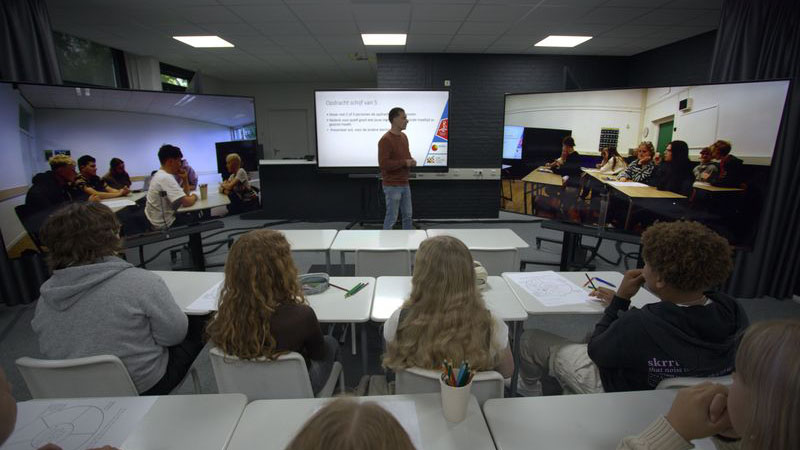Like many rural school districts around the world, the educational systems in certain areas of the Netherlands are facing major challenges. Three schools in the town of Sneek made the decision to find a new way to confront these challenges. They wanted to find a way to share resources between the three schools without disrupting timetables, and without requiring students to travel to different campuses. With the help of Dante AV, this was ultimately achieved.
[Enabling Immersive Classrooms]
The teachers envisioned a Virtual Campus with an immersive classroom design, one that could transform the traditional remote learning experience from a flat computer interaction into something that felt natural and connected for both students and teachers. What’s more, “We wanted technology, but without feeling the technology or being aware of the technology,” said Thorba Wierstra, geography teacher and IT policy officer at Bogerman, one of the three schools in the Zuid-West Fryslân municipality. “We wanted to find new technology to use not because it's technology, but because we wanted a better way for our students to learn, for us to be better teachers, and to make things possible that were not possible before.”
The vision was for each of the three classrooms to be equipped with interconnected screens, all positioned relative to each room’s perspective, to give the feeling of one joined-up classroom for all. This setup would allow students to see their teacher and peers across multiple locations as if they were all in the same room, breaking down the barriers of physical distance and enabling students to collaborate and interact in real time.
To achieve the sense of location immersion, Shure ceiling microphones capture the sound in each location, while small AIDA point-of-view cameras capture the students from distinct locations at the proper physical angle, and Audac soundbars placed under each screen provide localized, directional sound.
To deliver the immersive classroom experience with this structure, the layout critically needed to be supported by precise audio and video synchronization and imperceptible latency. This had been a long-term challenge for the project: real-time interaction through cameras, microphones, and screens had to be seamless and natural, especially over the distances between the schools in which each classroom was located. NFGD was challenged with delivering a system that could achieve a latency of under 4 milliseconds, the level of performance essential for maintaining the flow of conversation and collaboration in a classroom setting, where even slight delays can disrupt learning. For NFGD, the solution was obvious: Dante AV Ultra.
Dante AV Ultra ensured natural, smooth, and perfectly synced communication between locations. Its precise synchronization of audio and video streams ensures that teachers’ voices and movements are perfectly aligned, regardless of the distance between locations.
With the Virtual Campus in place across all three schools and shared lessons regularly taking place, the project has been a complete success. “It was not possible to justify supporting a curriculum or paying a teacher when only five or six students signed up in a district,” said Wierstra. “Once we connected the schools and brought them together, we can now offer a smaller course, expand to 20 or more students, and have one teacher teaching all of them.”
Get all the details in the video case study below.

